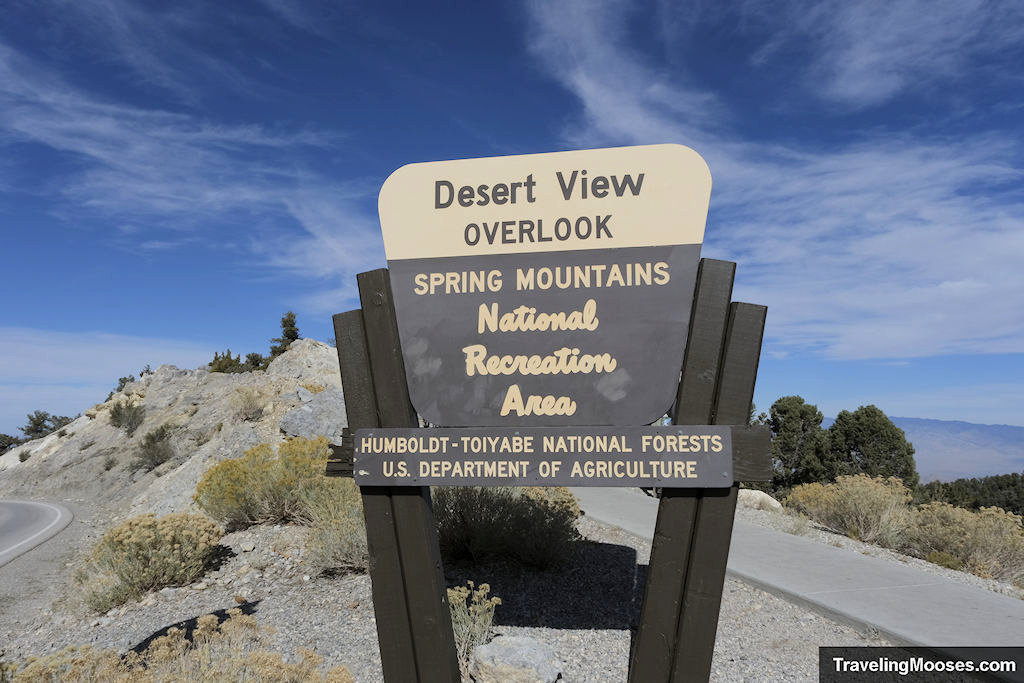A quick stop on the scenic highway 158, the Desert View Overlook near Mt. Charleston is great for all ages and offers a unique vantage into Nevada’s history along with sweeping views.
Notice: Mt. Charleston recently experienced substantial storm damage from Hurricane Hillary. Be sure to check for updated information about closures here.
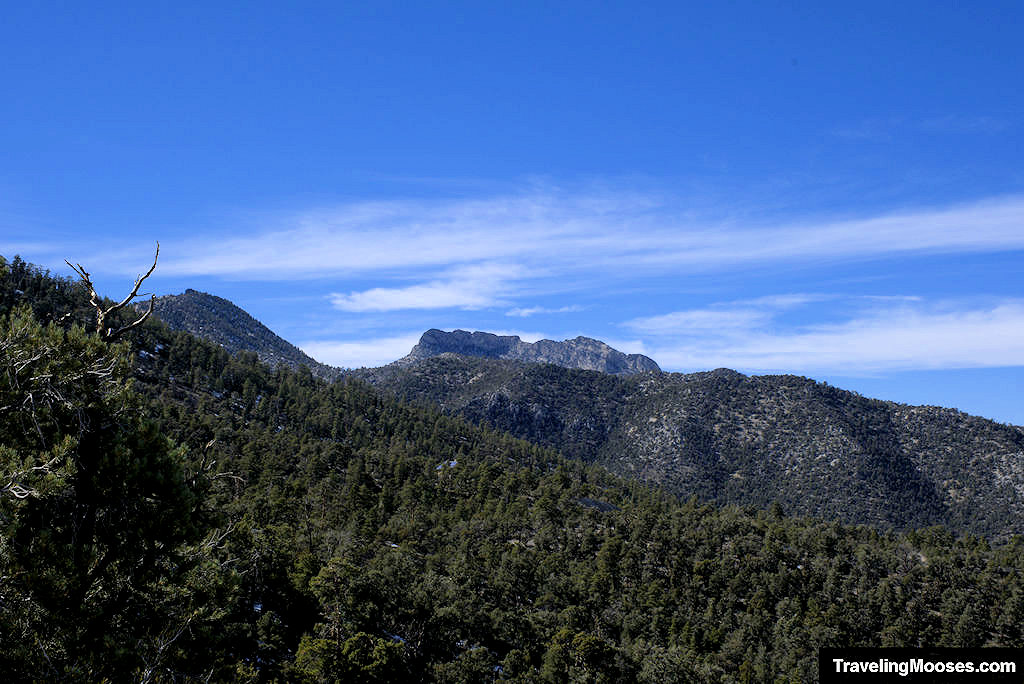
Desert View Overlook Trail Quick Facts
| Trail Description | Out and back |
| Trail Location | Desert View Overlook, Las Vegas, NV 89166 |
| Parking Lot | 36.33660, -115.62884 |
| Round Trip Mileage | 0.4 Miles |
| Average Time | <30 minutes |
| Difficulty | Easy |
| Elevation Gain | ~50 feet |
| Best time to visit | Spring through late fall – Parking area is accessible year-round. Walking path is not cleared of snow in the winter. |
| Entrance/Parking Fees | Free |
| Rating | 4.5 Mooses |
We’ve been up to Mt. Charleston several times, and we were excited to finally check out the Desert View Overlook as we knew the area was packed with historical significance.
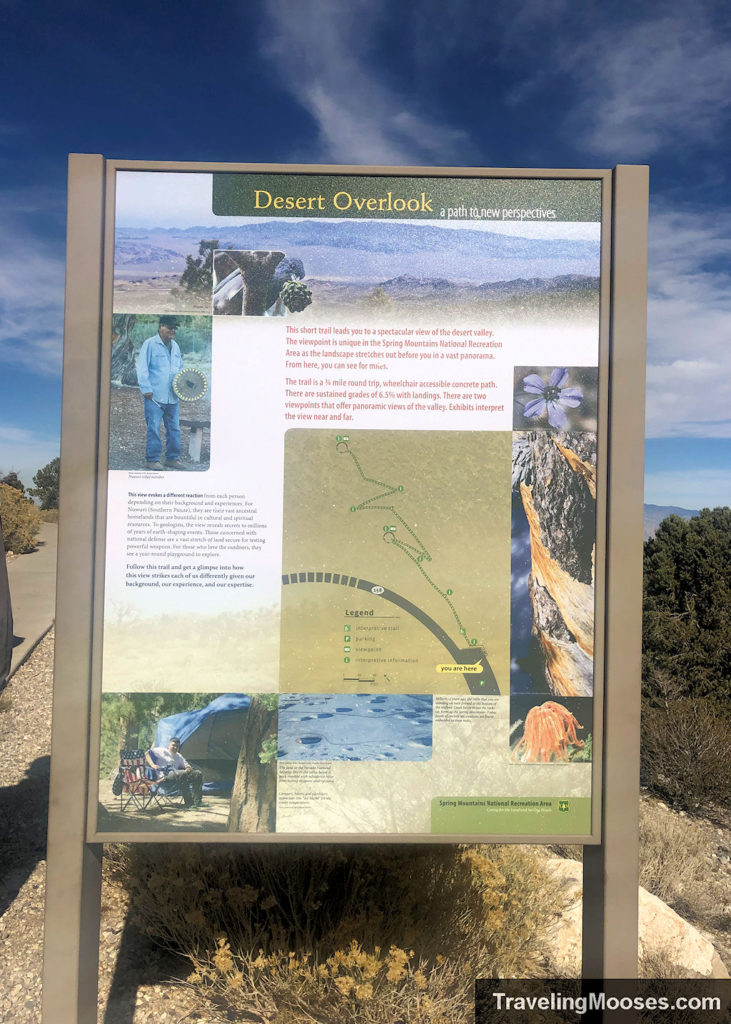
History of the Desert View Overlook
The local Nuwuvi (or Southern Paiute) people have called this land home for hundreds of years. They celebrate the area for its vast cultural and spiritual resources. You can learn more about the Nuwuvi at the nearby Spring Mountains Visitor Center.
If you’re a nature enthusiast, you’ll find a playground of the great outdoors with abundant mountains and a desert oasis to explore. You’ll also find extensive geological formations and plant life throughout the area.
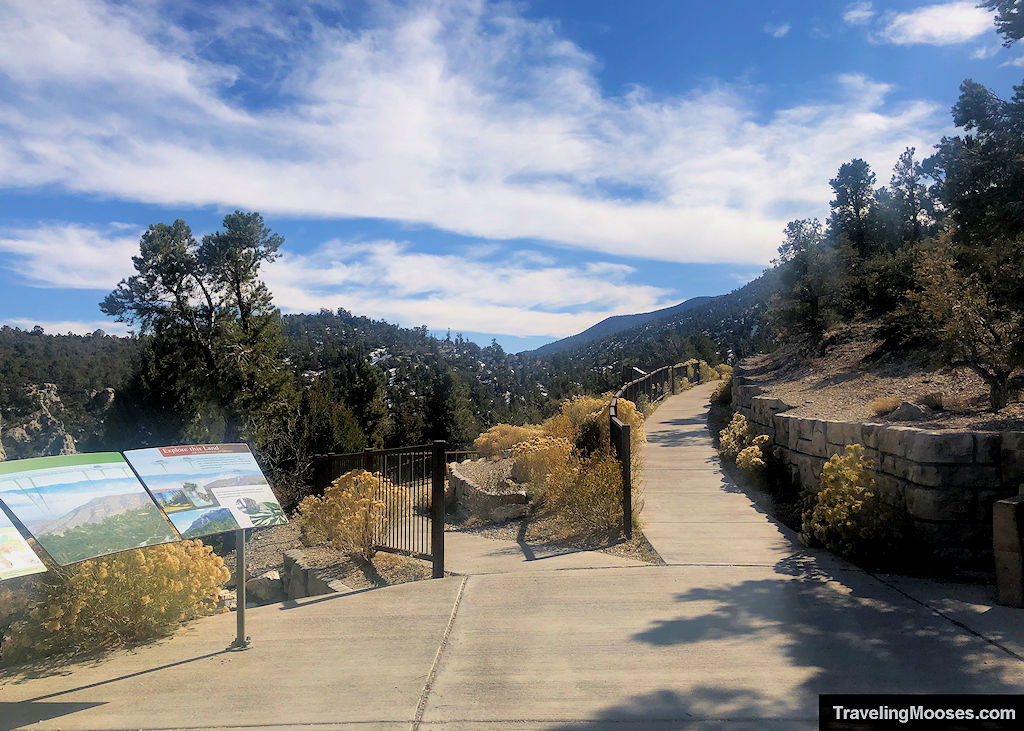
The trail is also famous for its storied past as a viewing location during the U.S. Atomic Testing Era between 1951 and 1963.
During this time, over 900 tests were conducted at the nearby Nevada Test Site and visitors flocked to the Desert View Overlook with hopes of seeing an atomic blast.
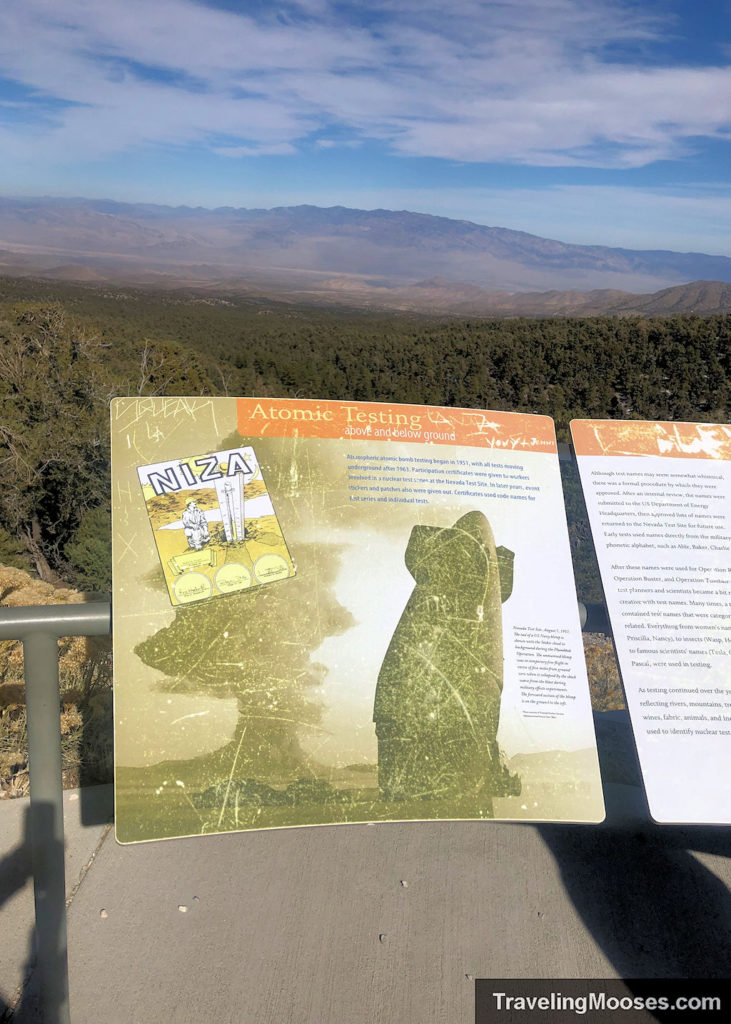
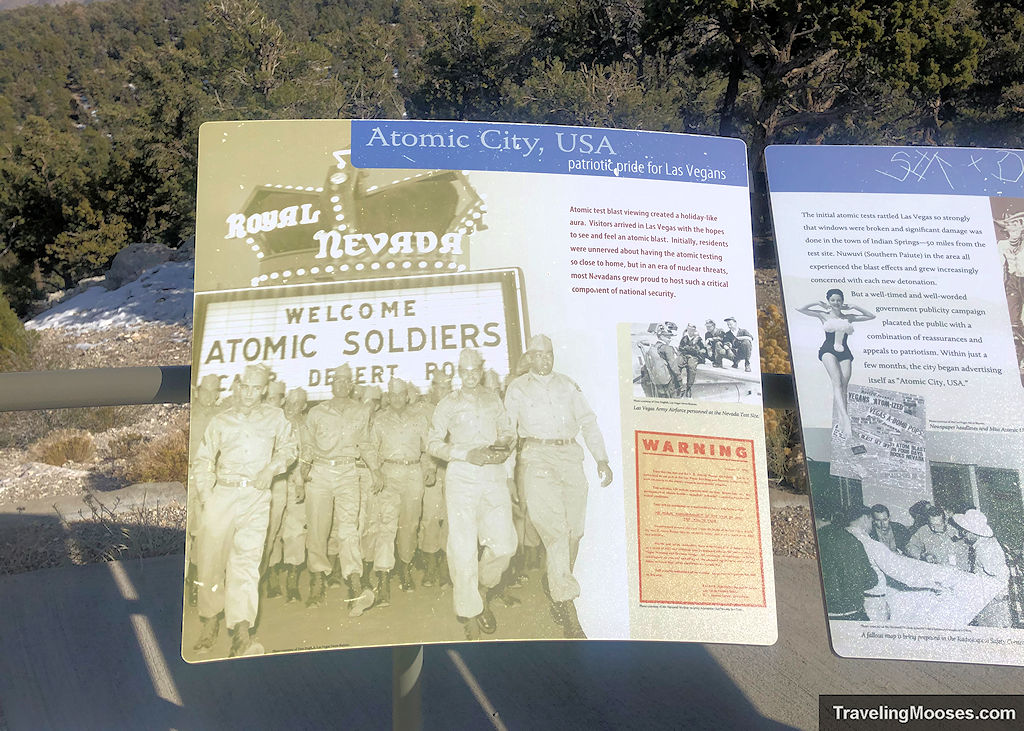
Las Vegas capitalized on the fascination with the public and catered to the rising demand in atomic tourism. At one point, the city became known as the “Atomic City.”
Local businesses were known for hosting “dawn parties” encouraging guests to celebrate throughout the night ending with a culmination of the testing flash that lit up the sky near dawn.
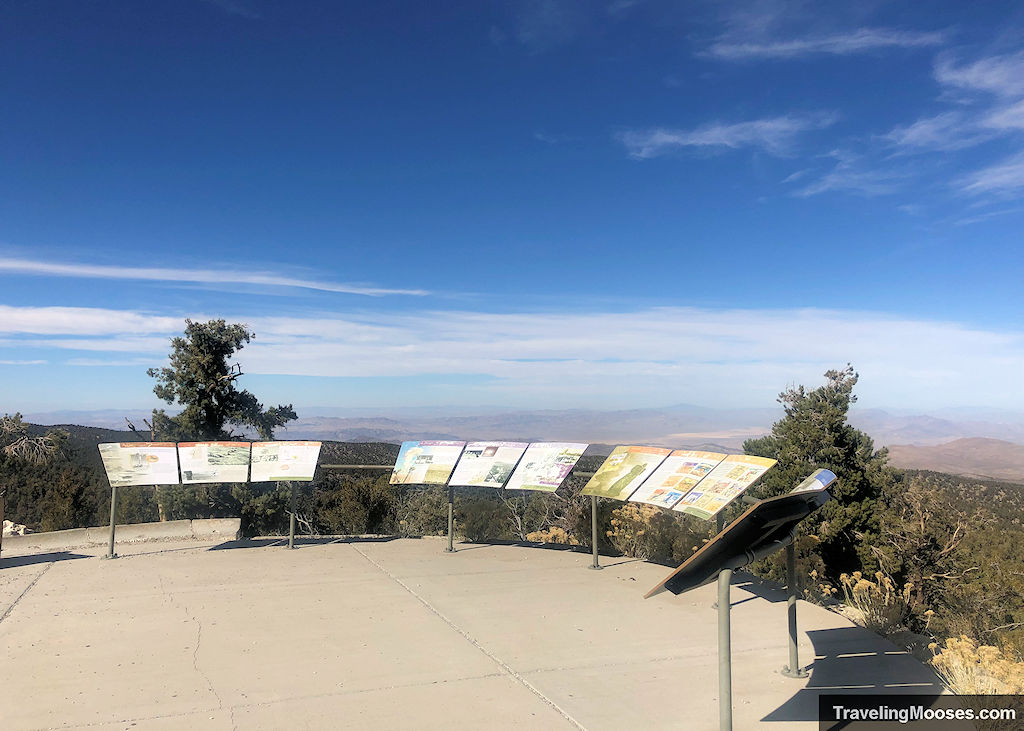
While some were reluctant for testing to occur so close to the city, many were proud to be supporting a critical piece of national security.
…and the first sensation was you felt the heat, and then you could see the fireball begin to form…and you could see the mushroom cloud starting to accelerate vertically, and the awesome colors…And everybody’s looking upwards at the fireball and the shock wave hits you…
Description of Atomic Tests from just 12 miles away.
You would brag about whether your family would take you to the Mount Charleston turnoff early in the morning to see the lights…I remember one occasion, when we actually did drive out early in the morning to see it closer…and it was, wow! Quite a sight to see. I can remember seeing color and I can remember seeing a cloud…it was quite a startling experience. But it wasn’t frightening.
1950s Las Vegas Grade Schooler
As the testing continued throughout the 1950s, early signs of the health impacts to the local wildlife and the environment became increasingly evident.
Concerns from local residents also grew as windows would shatter during the early tests up to 50 miles from the test site.
I remember hearing stories from tribal elders expressing concerns and sharing their sadness about the destructive force of the atomic tests and the disregard for our land and the tremendous harm it brought to our foods, medicines and other important resources.
Nuwuvi Tribal Member
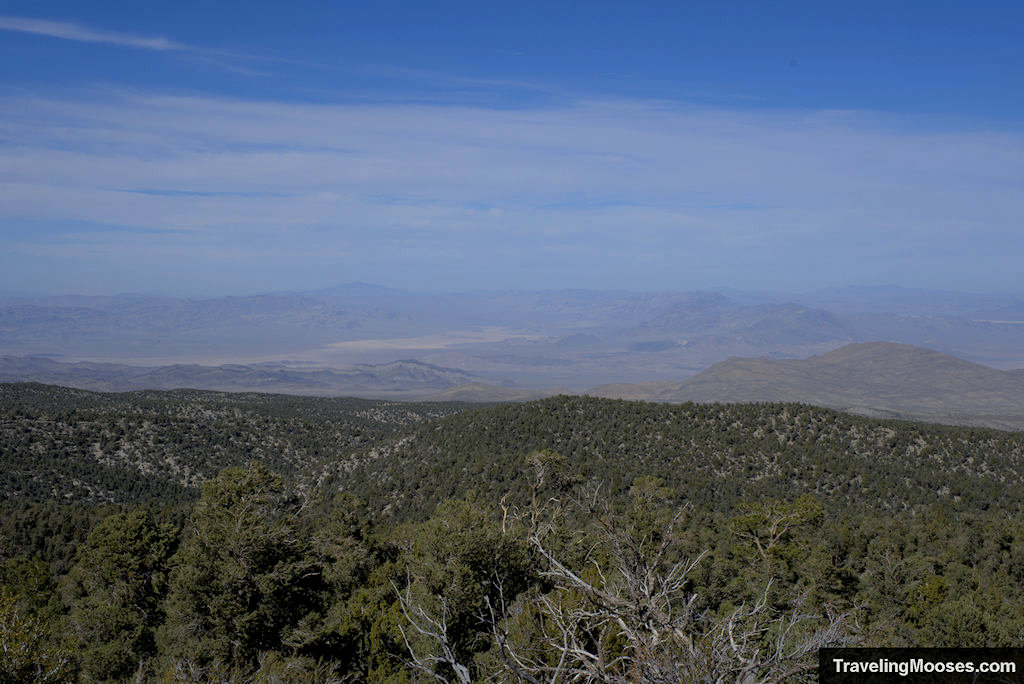
In 1959, it was discovered that radioactive deposits were found in wheat and milk in the northern United States, far from the Nevada Test Site.
By 1962, the Federal Radiational Council released a damning report on the “Health Implications of Fallout from Nuclear Weapons Testing through 1961.” By this point, opposition to testing was at an all-time high and being championed by leaders and diplomats of several countries across the world.
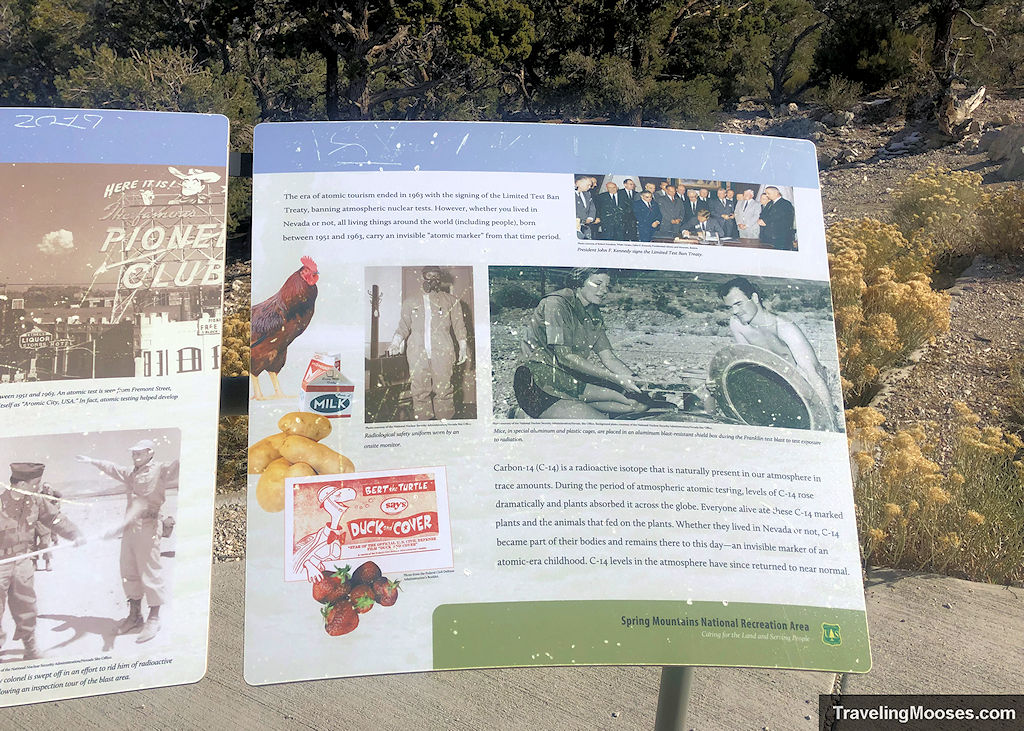
Finally, in 1963, the Limited Test Ban Treaty was signed ending atmospheric nuclear tests and halting the atomic tourism era. The treaty banned all nuclear tests in the atmosphere, in space or underwater, but did not ban testing underground.
The atmospheric tests had finally stopped, but the ecological impacts to food sources and health issues for local residents and military personnel persisted for years.
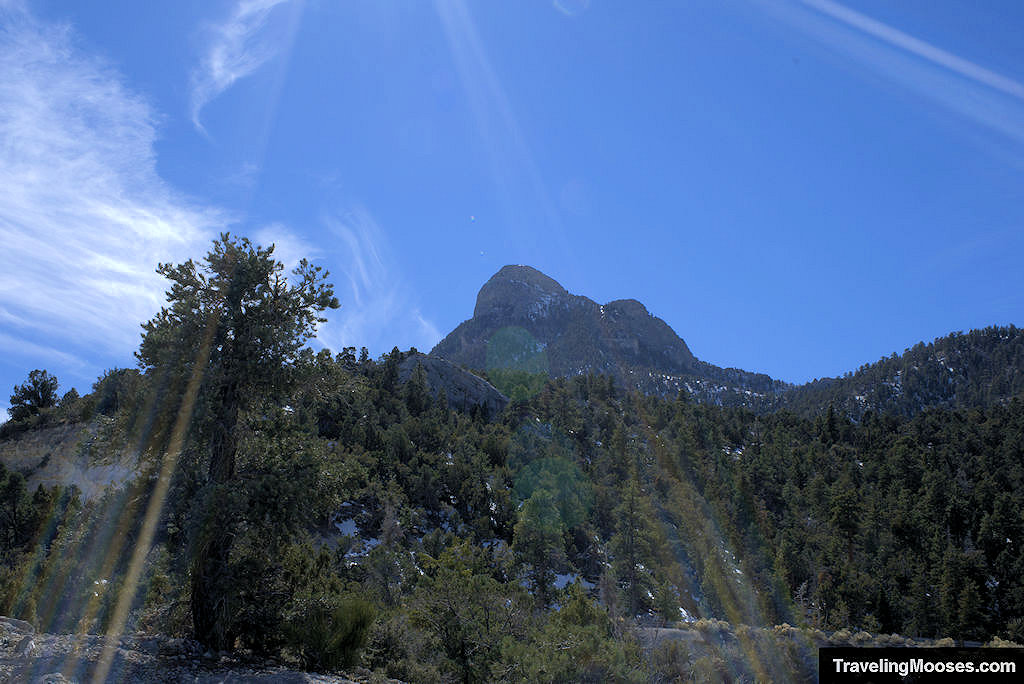
Our experience at the Desert View Overlook
We arrived in the early afternoon on a weekday to check out the scenic Desert View Overlook. There were only two other cars in the parking lot and they weren’t there for long. We walked down the short path to the two viewing areas along the trail and learned about the history of the area.
It made for a quick stop with beautiful views of the Spring Mountains and the desert valley below. The best part for us was learning more about the history of the area.
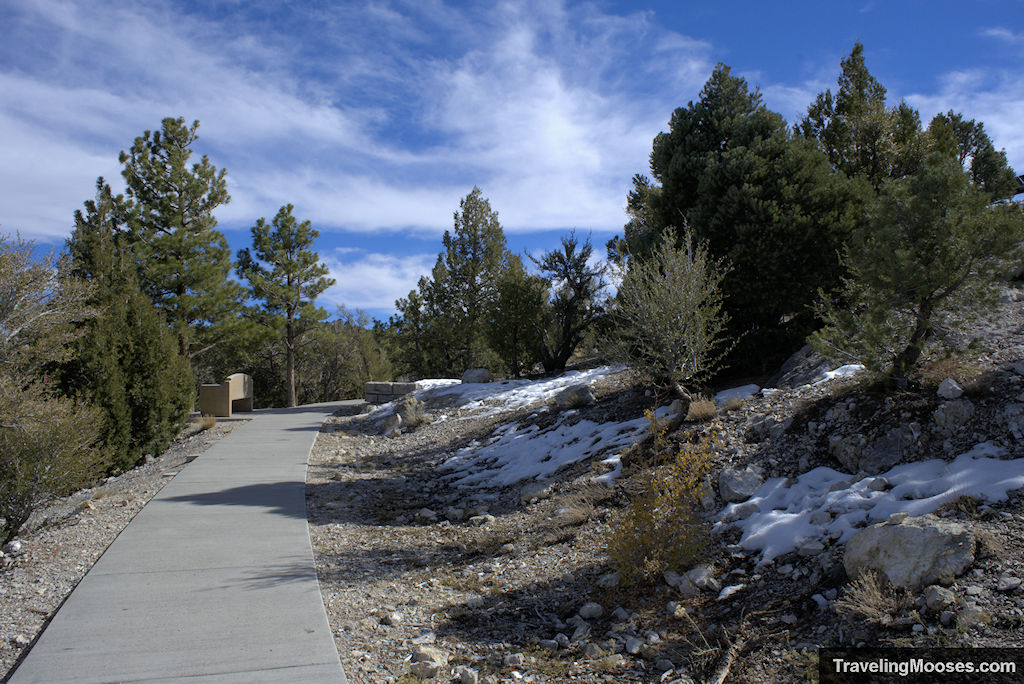
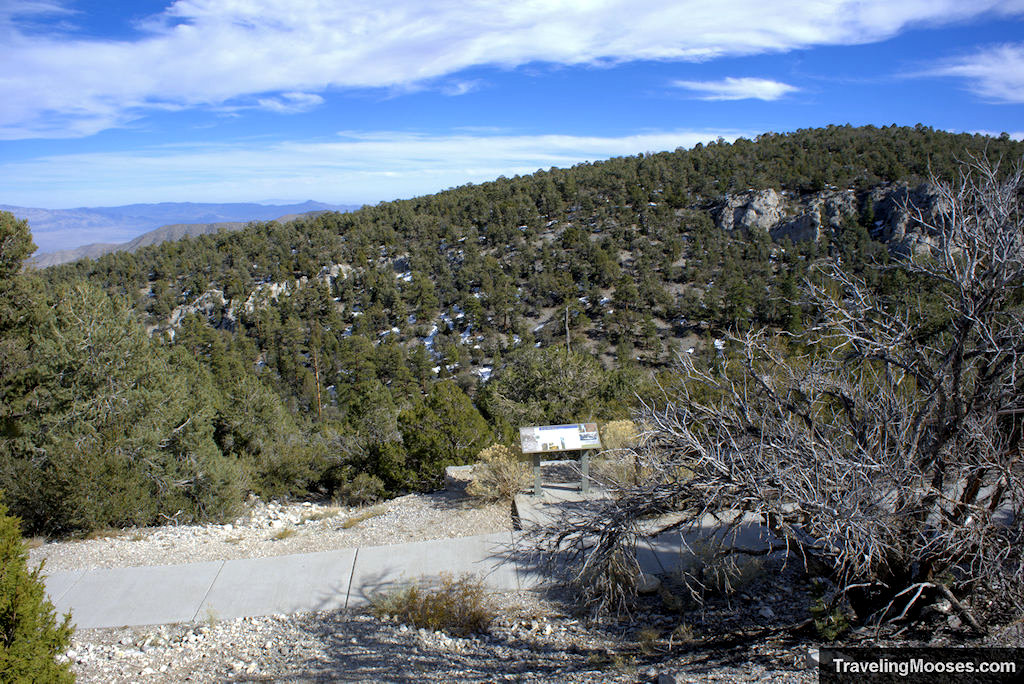
Should you visit the Desert View Overlook Trail?
Rating: 4.5 Mooses

What we liked
- The path was well maintained and had lots of benches and educational sign boards throughout.
- The day we visited it was sunny and crowds were non-existent.
- A variety of mountain and desert views all at once.
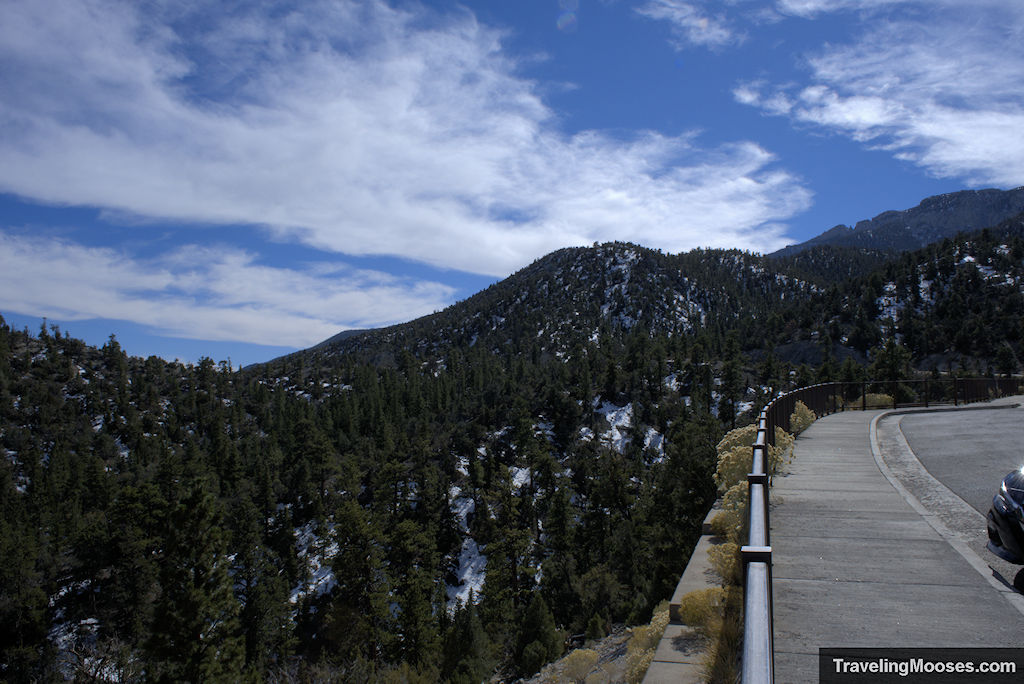
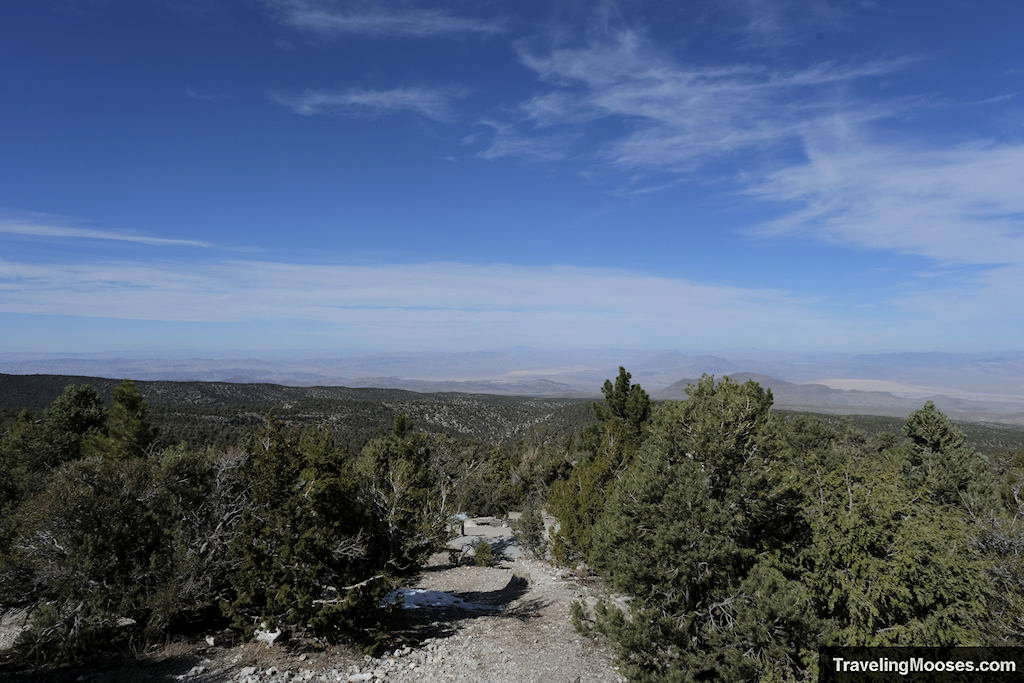
What we didn’t like
- Unfortunately, the informational sign boards detailing the history of the area have fallen into disrepair. The paint is beginning to chip and marks of vandalism were on many of the signs making some of them difficult to read. The harsh climate has also done them no favor, but we hope they are replaced in the future.
- We were lucky to visit in a downtime, but we could see it being a challenge to find parking on a busy sunny day during high season. Luckily, most visitors don’t stay long. Even if you have to wait for a spot to open up, it shouldn’t take long.
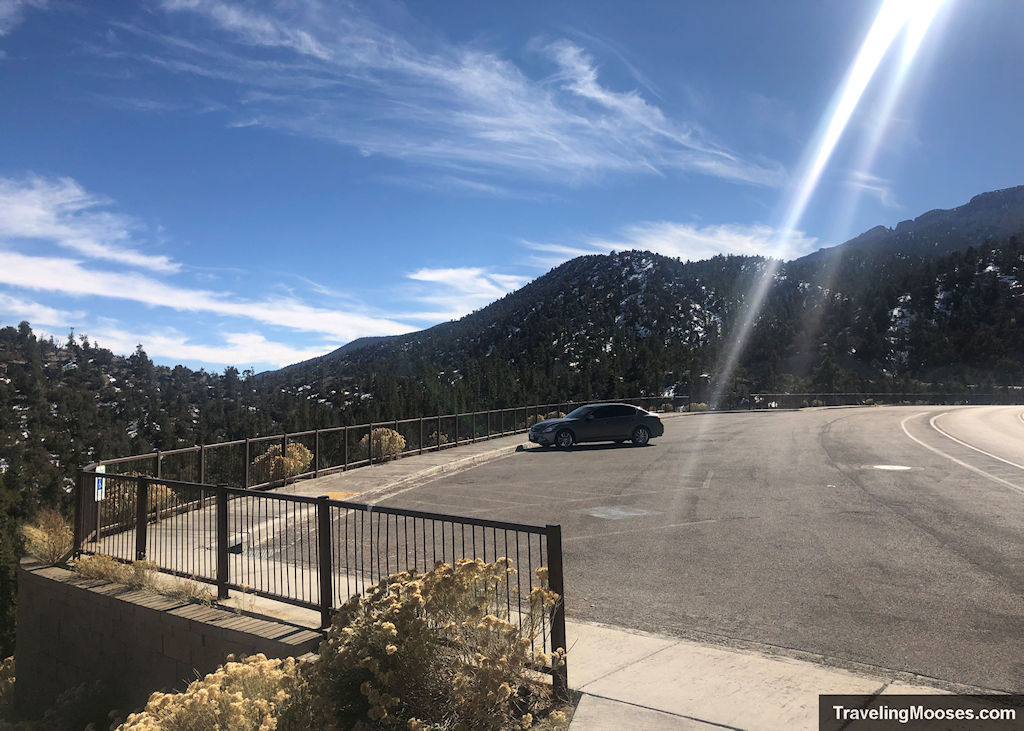
Know before you go
- The trail is accessible year-round; however, the path is not cleared in the winter and may be covered in snow.
- The path is wheelchair accessible and made of concrete.
- There are several exhibits offering a glimpse into the history of the area.
- There are no services or restrooms at the trailhead.
- On busy days, parking may be full at the trailhead, however you likely won’t need to wait long to get a spot.
- This is a great stop along the scenic Mt. Charleston byway.
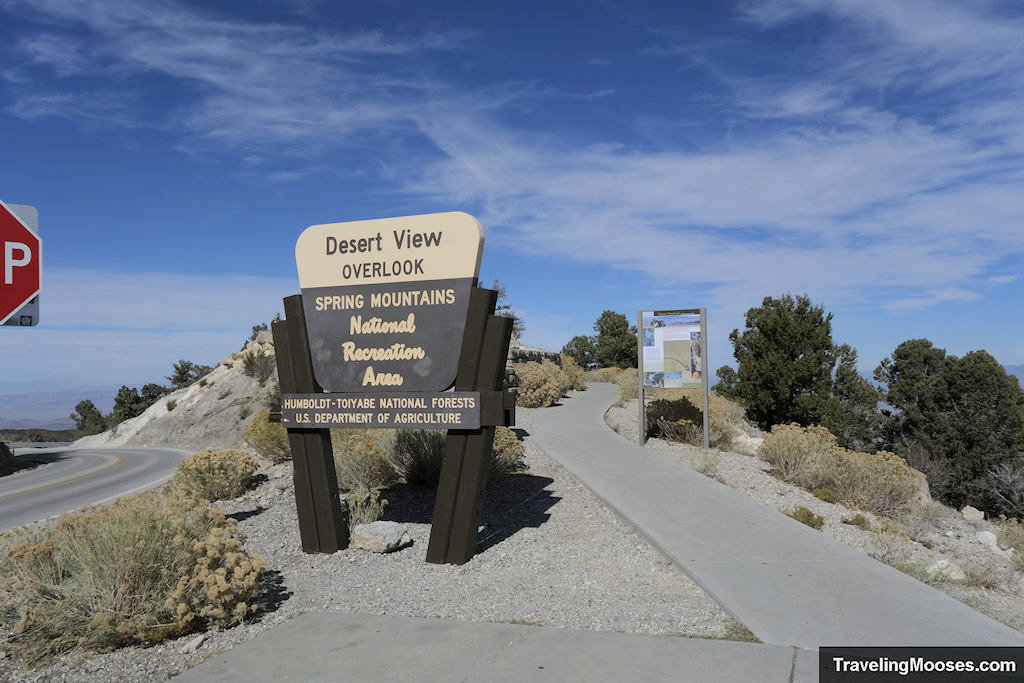
More information for your trip to Mt Charleston
- Activities: Explore the 15 best things to do in Mt Charleston
- Visitor Center: Explore the Spring Mountains Visitor Gateway
- Hiking: Upper Bristlecone Trail, a magical day of mountains and wild horses
- Hiking: Explore the Cathedral Rock trail
- Hiking: Robbers’ Roost
- Disc Golf: Lee Canyon Disc Golf Course – playing a perfect round
- Hiking: Eagle’s Nest Trail
- Hiking: Fletcher Canyon Trail
- Hiking: Raintree Trail

